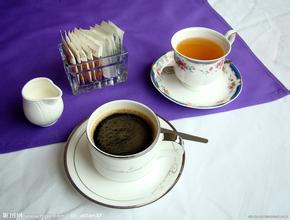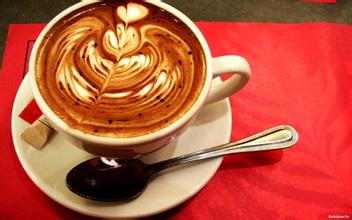Description of the Flavor of Indonesian Mantenin Coffee Variety introduction to the baking degree of high-quality coffee beans
Sumatra Island, formerly known as "Golden Island" and "Jinzhou", is famous for its rich gold deposits.
The topography of Sumatra is long and narrow. The topography of Sumatra is mainly from northwest to southeast of the island's Bali Mountains Barisan Mountains and the eastern lowlands. The mountains stretch, with more than 90 volcanoes and many volcanic lakes, volcanoes provide fertile soil suitable for coffee growth. For the tropical rain forest climate, high temperature and rainy all the year round.
Sumatra is the largest producer of Indonesian coffee, and well-known coffee-growing areas are mainly concentrated in the northern mountains, including Aceh in the northernmost province of Aceh and Sumatera Utara in North Sumatra. Including the well-known Mantenin Mandheling, Lin Dong Lintong, Jiayushan Gayo Mountain.
The name of Mandheling coffee is said to come from the local people, mandailing. The producing areas mostly point to the mountains in the north of Lake dopa, and the specific producing areas need to be verified.
Lintong coffee comes from the foothills around Lake Lake Toba in North Sumatra, Sumatra's largest volcanic lake, and its name comes from the small town called lintong in the southwest of Lake dopa.
Gayo mountain Coffee from Takengon, Takangong, Aceh Province and the mountains around Lake Lake Tawar.
Medan Medan and Padang Padang are important cities involved in coffee. They are the capital of North Sumatra and West Sumatra respectively, and they are also the most densely populated areas in Sumatra. The former is an important distribution center for Sumatra coffee exports, while the latter is also a well-known coffee production around, such as Ankola.
Coffee from Sumatra includes Arabica and Robusta, which is usually grown at high altitudes in the mountains, while robusta is grown in the lowlands. Coffee processing is famous for its traditional "wet planing", Giling Basah,wet-hulled. The special treatment is partly derived from the humid climate of Sumatra. Half of the Mantenin coffee beans are "washed" beans, while the other half are "air-dried" beans. The raw beans are so ugly that many novice coffee roasters misunderstand its appearance and think they have been cheated. But when Mantenin coffee beans are roasted, especially after deep roasting, their appearance is rich and round, with a strong texture, and the coffee oil on the surface is also very attractive, with the smell of fructose syrup, strong taste with some bitterness, and strong and special aroma. In addition, Manning can help digestion, is a full of masculine coffee. Sumatra also has another type of water-washed beans called "Chiyushan GayoMountain". This coffee bean is grown from connected coffee trees and is not produced in large quantities, so it is not recognized by many people. It has the spice flavor of cloves and cardamom after baking, and it tastes good.
Most of Celebes' Kalossi coffee beans are washed beans, which are thick in texture, but also highly acidic, and contain the flavor of wild mushrooms and similar herbal medicines. Not many people like them, and most of them are sold to the United States and Japan. Aged coffee beans are also famous in Celebes, but they are very expensive and have to be stored in a warm and humid climate for the best results. Old coffee beans will not find any sour taste at all after roasting. It is rich in texture and mellow in taste, and the effect is like old red wine. Coffee lovers must try it when they have the opportunity to go to Celebes in Indonesia.
Java coffee beans have now lost their proud name: mocha-Java, because in the early 1970s, farmers cut down traditional coffee trees and planted some high-yield and high-profit coffee beans. In Java, most coffee beans are dried by high-temperature machines, so they have lost the reality of coffee, and the sour taste will be obvious after baking, so it can be said that it is difficult to find high-quality Arabica coffee beans in Java.

Important Notice :
前街咖啡 FrontStreet Coffee has moved to new addredd:
FrontStreet Coffee Address: 315,Donghua East Road,GuangZhou
Tel:020 38364473
- Prev

Introduction to the taste characteristics of boutique coffee flavor description in Panamanian coffee variety producing area
In September 1977, Pakistan and the United States signed the Panama Canal Treaty (also known as the Torrijos-Carter Treaty). [5] in the general election in Panama in May 1989, both the ruling party and the opposition party claimed victory, so the election result was invalid. With the good offices of the Organization of American States, Rodriguez became interim president on August 31. Noriega, who opposes the US occupation, was appointed head of government on December 15th.
- Next

Characteristics of Blue Mountain Coffee Variety producing area introduction to the taste of boutique coffee bean flavor manor
In 1717, King Louis XV of France ordered the cultivation of coffee in Jamaica. In the middle of the Blue Mountain Coffee era, the Governor of Jamaica, Sir Nicholas Nicholas Lawes, imported Arabica seeds from Martinique and began to plant them in St. Andrew. To this day, the St. Andrews area is still
Related
- Detailed explanation of Jadeite planting Land in Panamanian Jadeite Manor introduction to the grading system of Jadeite competitive bidding, Red bid, Green bid and Rose Summer
- Story of Coffee planting in Brenka region of Costa Rica Stonehenge Manor anaerobic heavy honey treatment of flavor mouth
- What's on the barrel of Blue Mountain Coffee beans?
- Can American coffee also pull flowers? How to use hot American style to pull out a good-looking pattern?
- Can you make a cold extract with coffee beans? What is the right proportion for cold-extracted coffee formula?
- Indonesian PWN Gold Mandrine Coffee Origin Features Flavor How to Chong? Mandolin coffee is American.
- A brief introduction to the flavor characteristics of Brazilian yellow bourbon coffee beans
- What is the effect of different water quality on the flavor of cold-extracted coffee? What kind of water is best for brewing coffee?
- Why do you think of Rose Summer whenever you mention Panamanian coffee?
- Introduction to the characteristics of authentic blue mountain coffee bean producing areas? What is the CIB Coffee Authority in Jamaica?

